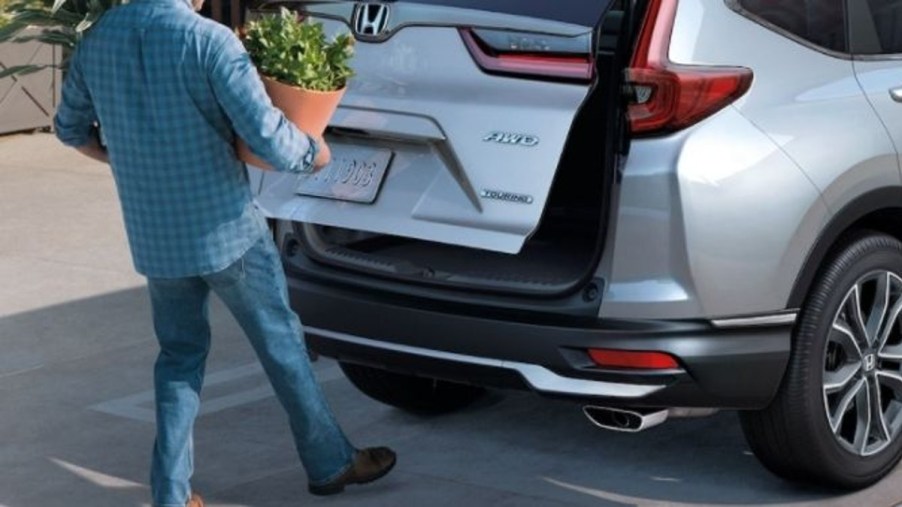
Hands-Free Liftgates: Everything You Need to Know About These Handy Features
The hands-free liftgate is a game changer. Power liftgates have been common for a while, but the hands-free variety has become more widely available recently. This handy feature adds even more convenience to SUVs, minivans, and wagons, especially for people loading and unloading cargo regularly.
Let’s look at how hands-free liftgates work and which vehicles have them.
What is a hands-free liftgate, and how do you operate it?

A hands-free liftgate is a power liftgate you can operate without even pushing a button. In most applications, it’s operated by walking up to the back of the vehicle and kicking your foot under the bumper. A sensor reads the motion of your foot and opens or closes the door automatically.
However, some manufacturers take a different approach. Subaru lets you keep both feet on the ground; instead, you operate the hands-free liftgate by waving a hand or an elbow at the Subaru emblem on the back of the vehicle. With the Kia Smart Tailgate, you simply stand behind the vehicle for three seconds with the key fob on you, and it will open automatically.
What are the benefits of a hands-free liftgate?

The point of a hands-free liftgate is to make accessing your vehicle’s cargo area easier. If your arms are full of groceries, kicking your foot under the bumper is easier than fumbling for your key fob to press the button to open the door. Similarly, when removing cumbersome cargo from your vehicle, this feature allows you to close the liftgate without having to make another trip back to the car to close the hatch.
What is the difference between a power liftgate and a hands-free liftgate?
A power liftgate without a hands-free feature is operated with a button. In most cases, the vehicle’s dashboard, key fob, and hatch have buttons to open and close the liftgate. In some SUVs, like the Jeep Grand Cherokee, a button inside the cargo area is easy to reach while the hatch is open. A power liftgate is a nice improvement over a manual version, but it’s even better when you don’t have to use your hands.
A hands-free liftgate adds sensors to make it easier to use. In most cases, those sensors are under the rear bumper, detecting movement by your foot. However, as we mentioned, not all manufacturers choose foot-operated liftgates. Sometimes, you can wave an elbow at the hatch or stand behind the vehicle and wait for the door to open.
What SUVs and minivans have hands-free liftgates?
These convenient features used to be limited to luxury brands like Mercedes-Benz and BMW, but they’re becoming common on mainstream SUVs, minivans, and cars. They’re available on compact SUVs like the Honda CR-V and Toyota RAV4, midsize SUVs like the Nissan Pathfinder and Kia Telluride, and full-size SUVs like the Ford Expedition and Chevrolet Tahoe. Typically, only higher trim levels have this handy feature.
Hands-free liftgates are also optional on all four minivans currently on the market: the Chrysler Pacifica, Honda Odyssey, Toyota Sienna, and Kia Carnival.
If you’re in the market for a new SUV, there’s a good chance the model you’re considering has a hands-free liftgate as an option. Even if you’d rather have a sedan, hands-free trunk lids are a thing too.





